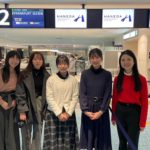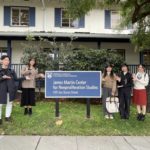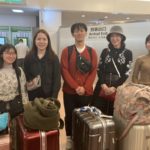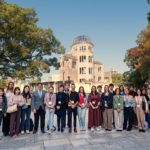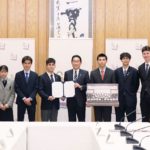“Youth Caravan from Hiroshima”
Interviews with Participants

On the back of the accomplishments of the G7 Hiroshima Summit, the Hiroshima Organization for Global Peace (HOPe) launched the G7 Hiroshima Summit Legacy Project “Youth Caravan from Hiroshima” to dispatch youths, primarily from Hiroshima, to various G7 countries. From the end of October to early December 2023, a total of 15 youths were divided into three groups of five (the UK/France track, the US/Canada track, and the Germany/Italy track) and traveled to the respective regions. They interacted with local students and held a panel exhibition on the reality of the atomic bombing, the accomplishments of the G7 Hiroshima Summit, among other subjects. In this interview, we spoke to two participants of the Youth Caravan from Hiroshima about their experiences.
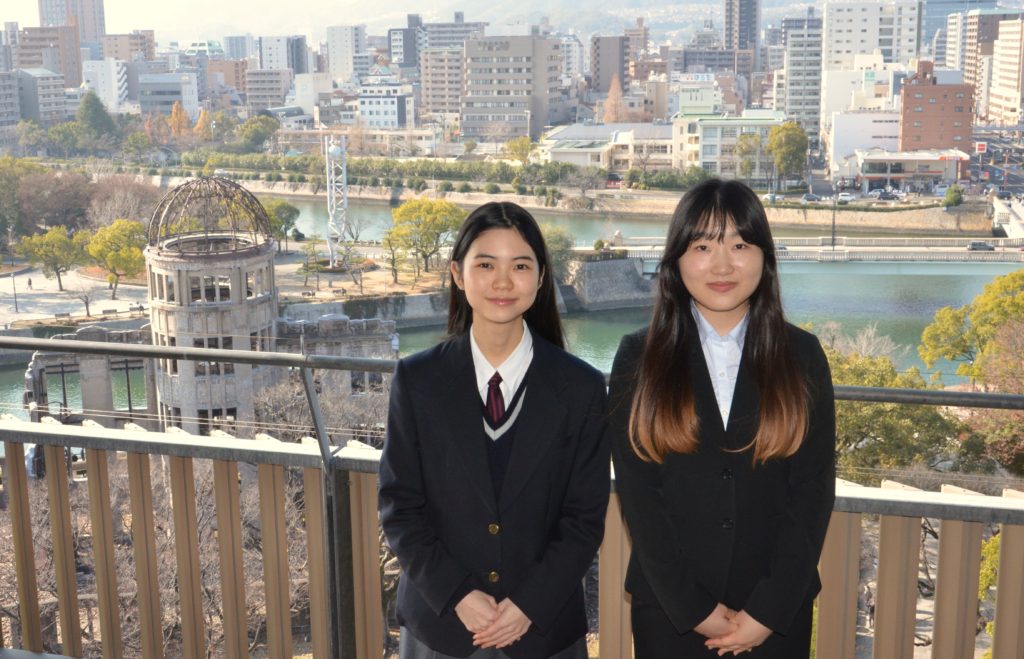
Interviewees Ms. Oda Suzuno (left) and Ms. Okuda Yayano (right)
[The US/Canada Track]
Ms. Okuda Yayano (1st-year student, Integrated Arts and Sciences Program, School of Integrated Arts and Sciences, Hiroshima University)
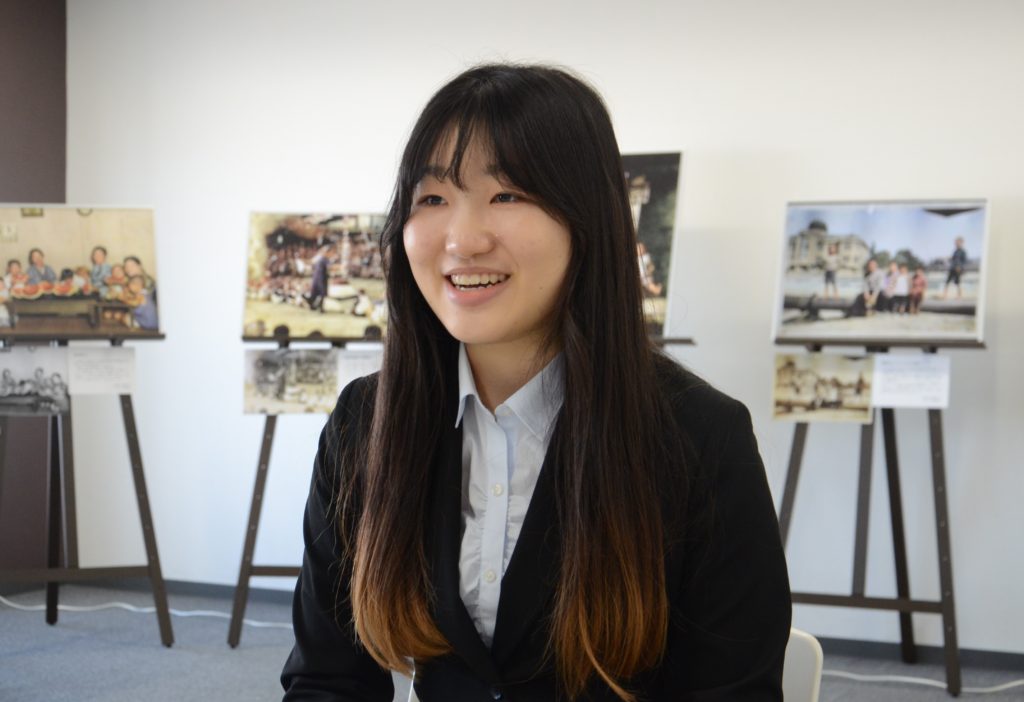
I was born in Oita Prefecture and came to Hiroshima in April 2023. I have always been interested in international activities and had participated in the INU Student Seminar, an international exchange program held at Hiroshima University, during the summer holidays. Model UN simulations were carried out as part of that program, and I became keenly aware of the importance of speaking up on political issues. I applied for this project when I heard that it also offers many opportunities for engaging in dialogue with youths.
My most memorable experience was a presentation that I gave at the Middlebury Institute of International Studies at Monterey. At the time, it felt like people in other countries often think that all Japanese people are interested in the issue of nuclear weapons. I was born in Oita, so I know the difference in awareness levels between Oita and Hiroshima where nuclear weapons are concerned. When I was there, however, I was told that if Japanese people do not convey the horror of nuclear weapons, no one else probably would. I realized the importance for Japan as a whole to take a stance on the nuclear issue going forward and the need for peace education to convey this to youths.
Also, I participated in an interactive workshop in Vancouver, Canada, where I exchanged opinions with local youths. I mentioned my experience with Model UN simulations, and it turned out that some members in the group had come to Hiroshima prior to the G7 Hiroshima Summit as members of Y7 (youths representing their respective countries at official G7-affiliated meetings)! They told me that it is important for youths to be willing to engage in discussion and think of ideas collaboratively.
-1024x726.jpg)
What I learned from this Youth Caravan is that although there are many problems in the world that need to be addressed, these problems are not independent of one another but are always interconnected somehow. Even though all of us at the workshop had different interests, we also share similarities that allow us to tackle problems by borrowing another person’s knowledge. I hope to become a more influential voice so that I can have an impact on politics and organizations in the future, and I look forward to participating in more of such programs if they exist.
[The Germany/Italy Track]
Ms. Oda Suzuno (3rd-year student, International Communication Course, Hiroshima Municipal Funairi High School)
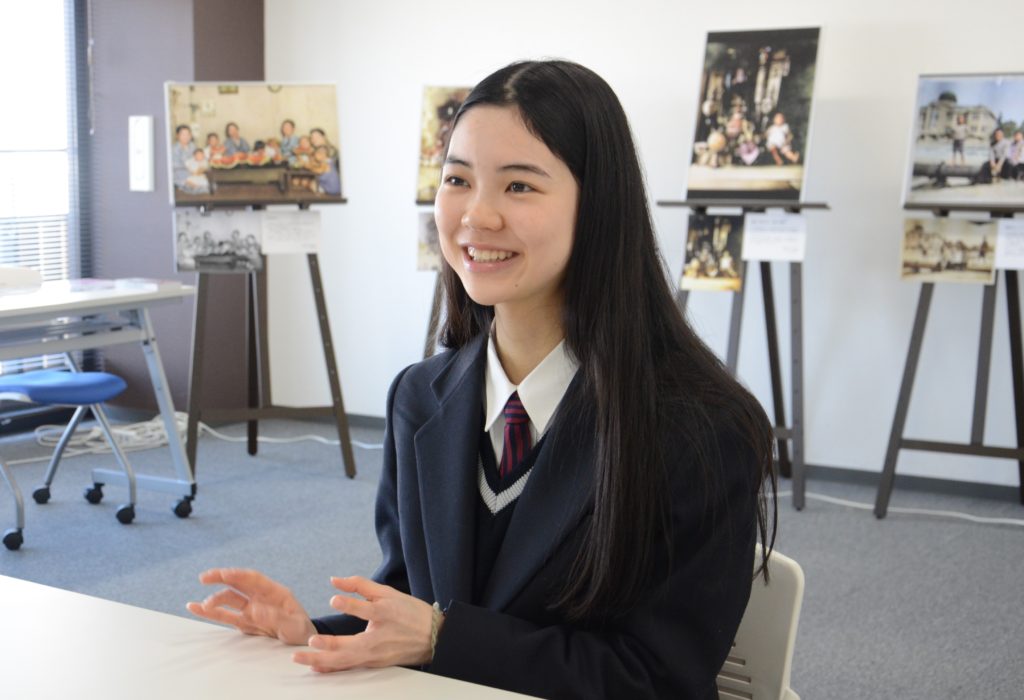
I was born and raised in Hiroshima, but I always had an aversion toward peace education. I was shocked by a movie I saw as a child about the atomic bombing, and I had avoided that topic ever since. However, as my goal is to work abroad in the future, I felt that I could no longer avoid the nuclear issue given that I was born in Hiroshima, so I decided to apply for this project.
The Germany/Italy Track that I was part of revolved around how we can confront the negative history of war. We held panel exhibitions and dialogue events at schools in Berlin and Milan about the damage caused by the atomic bombing. Two things surprised me. One was the opinion that dropping the atomic bomb was necessary to end the war, which someone raised in response to the question of what the purpose of the atomic bombing was. This was the first time I heard such an opinion directly, which led me to wonder who the victims of war are. Also, someone at a high school in Italy asked, “If a scientist accidentally discovers a raw material that could become a biological or chemical weapon in the future, when should they terminate the research?” This perspective also made me reflect on this question for the very first time.
Another thing that left an impression on me was how we can preserve memories of war. I was surprised to see a photo of a woman having her hair shaved in public on display at a museum in Germany. At the Shoah Memorial in Milan located at the city’s Central Station, we were told by our guide that the site was meant to preserve memories, and I felt the strong desire to never let war crimes that were committed in the past fade away.
-1024x662.jpg)
I learned from this experience that there is in fact more than one way to learn. Even people of the same generation come from different countries and have different opinions and religious beliefs, and it is important for everyone to find common ground a little at a time when there is a need to reach a consensus. Going forward, I hope to serve as an intermediary between people who attempt to convey peace through various methods such as art and music, such as Niwata Anju (who is involved in the “Rebooting Memories” project that aims to colorize war-related photos in black and white), and people who wish to learn more about peace.
Related article: G7 Hiroshima Summit Legacy Project “Youth Caravan from Hiroshima”
https://hiroshimaforpeace.com/g7summitlegacyproject/(Japanese only)
Tags associated with this article



